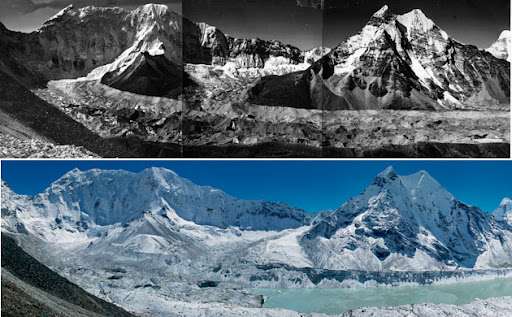Well 11/11/11 passed with no major mishaps but on this momentous day the Seventeeth Conference of the South Asian Association for Regional Cooperation (SAARC) drew to a close in the Maldives. Founded in 1985, this conference includes representatives from Bangladesh, Bhutan, India, the Maldives, Nepal, Pakistan and Sri Lanka, with the admission of Afghanistan in 2005.
The aim of the conference was to try and improve trade within the region, good governance, and most relevant to this blog, to discuss and suggest solutions for reducing water security threats to the region due to climate change.
Encapsulated under the conference theme ‘building bridges’, the conference highlighted that basin-wide, trans-boundary cooperation will be required to reduce the impacts of a decrease in the meltwater discharge to the major rivers within the region. This includes rivers such as the Indus, Brahmaputra, Ganges that support most of the agricultural production in the basin as well as being the main source of freshwater for the growing south Asian population.
WATER WARS: FIGHTING THE FOOD CRISIS
If you would like to see some of the geo-engineering solutions that may have been discussed at the conference, then there is currently an exhibition entitled ‘Water Wars’ being held at the Science Museum in London that is definitely worth a visit. Although most of the exhibition shows geo-engineering methods that are still in the early stages of development, it also shows how the effects of water security in regions such as Asia may be felt in the United Kingdom. After all, if the countries cannot produce enough food to support their own population, why would they export it to us? This point is supported in the video available on the website and is really worth a look if you have a few moments (even if only for the animation and the girls voice). There is also an interactive game where you can see how you can cope against providing for a growing population in the context of reduced water availability. For a chance to put yourself in the policy makers shoes and to experience the difficulties that some countries in south Asia may have to solve in the future, click here.
The impact of glacial retreat on countries down valley/ downstream of the Himalayas demonstrates the importance of understanding how glaciers respond to climate change. The effects of glacial melt on surrounding communities are growing on the political agenda, and I will discuss a few of these such as water security and glacial lake outbursts in the oncoming weeks.
YET ANOTHER CONFERENCE
 |
| Figure 1: Map showing the region studied by the ICMOD. |
The International Centre for Integrated Mountain Development (ICMOD) has revealed a new project this week to be held in Thimpu, Bhutan between the 14th and 19th of November 2011. Entitled ‘Connecting from Space to Village’, a series of events shall be conducted to coincide with the Bhutan’s ‘Climate Summit for a Living Himalayas’. The aim is to draw attention to policymakers, development agencies, local communities and other stakeholders, the potential of using remote sensing and Earth observations to better understanding and address issues of climate change.
The project seeks to act as a platform for sharing experiences of Earth observation applications that can be incorporated into the Summit’s discussions. These include themes based around ensuring food security, securing natural freshwater and also securing and maintaining biodiversity for long-term, sustainable use.

No comments:
Post a Comment